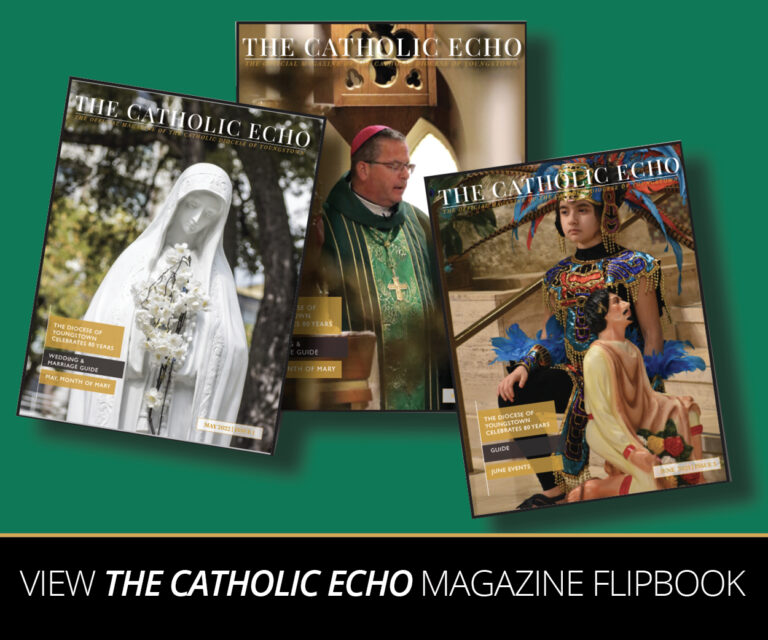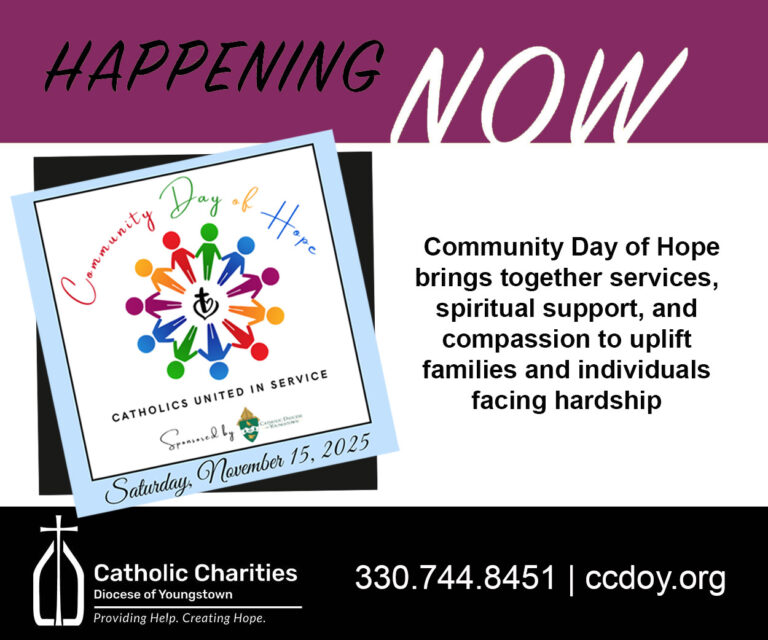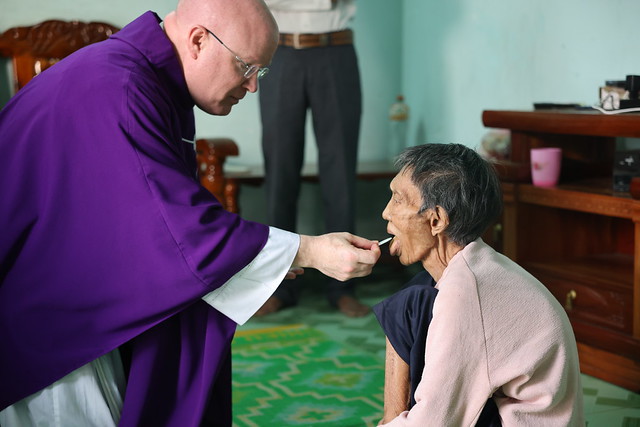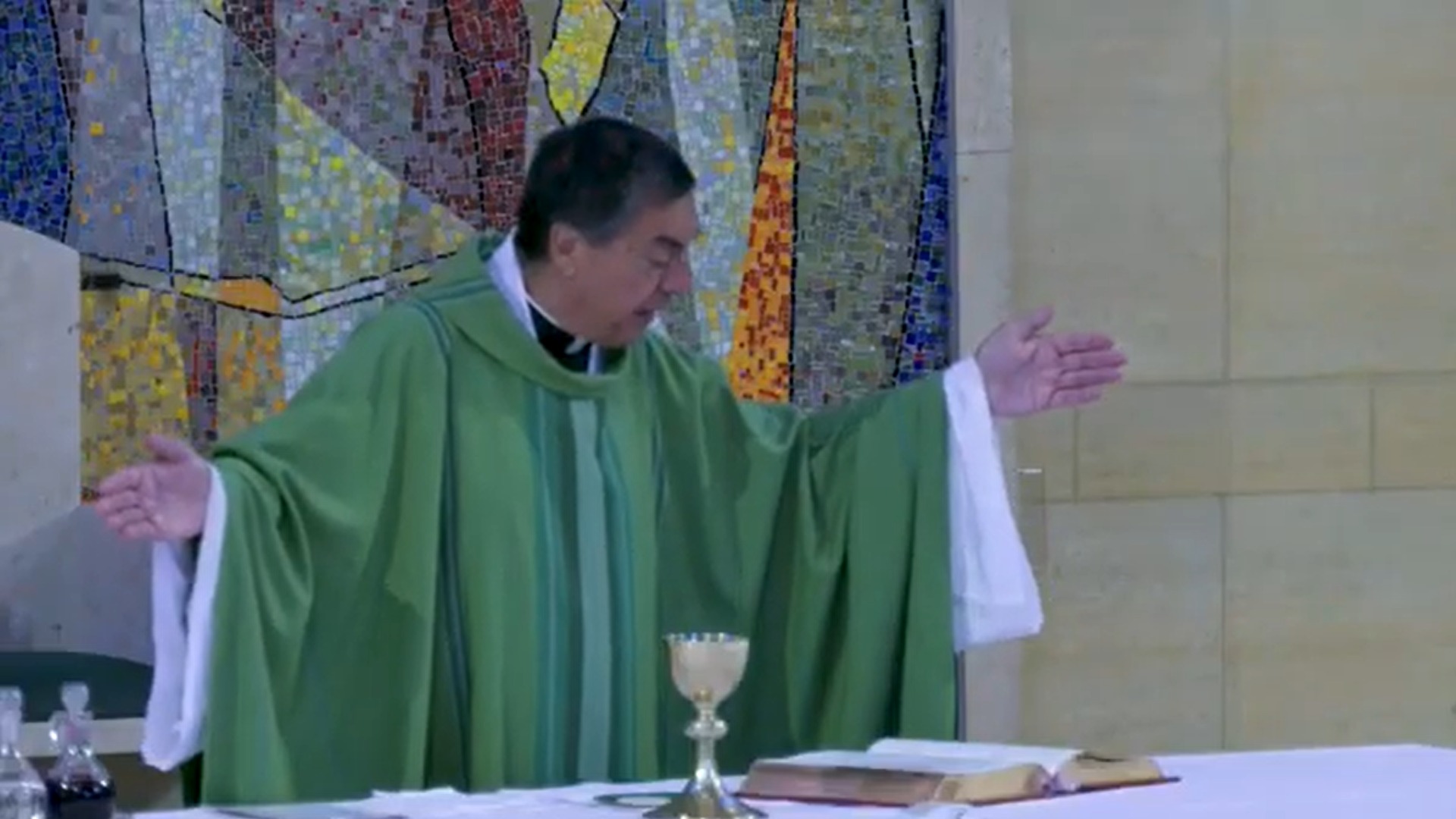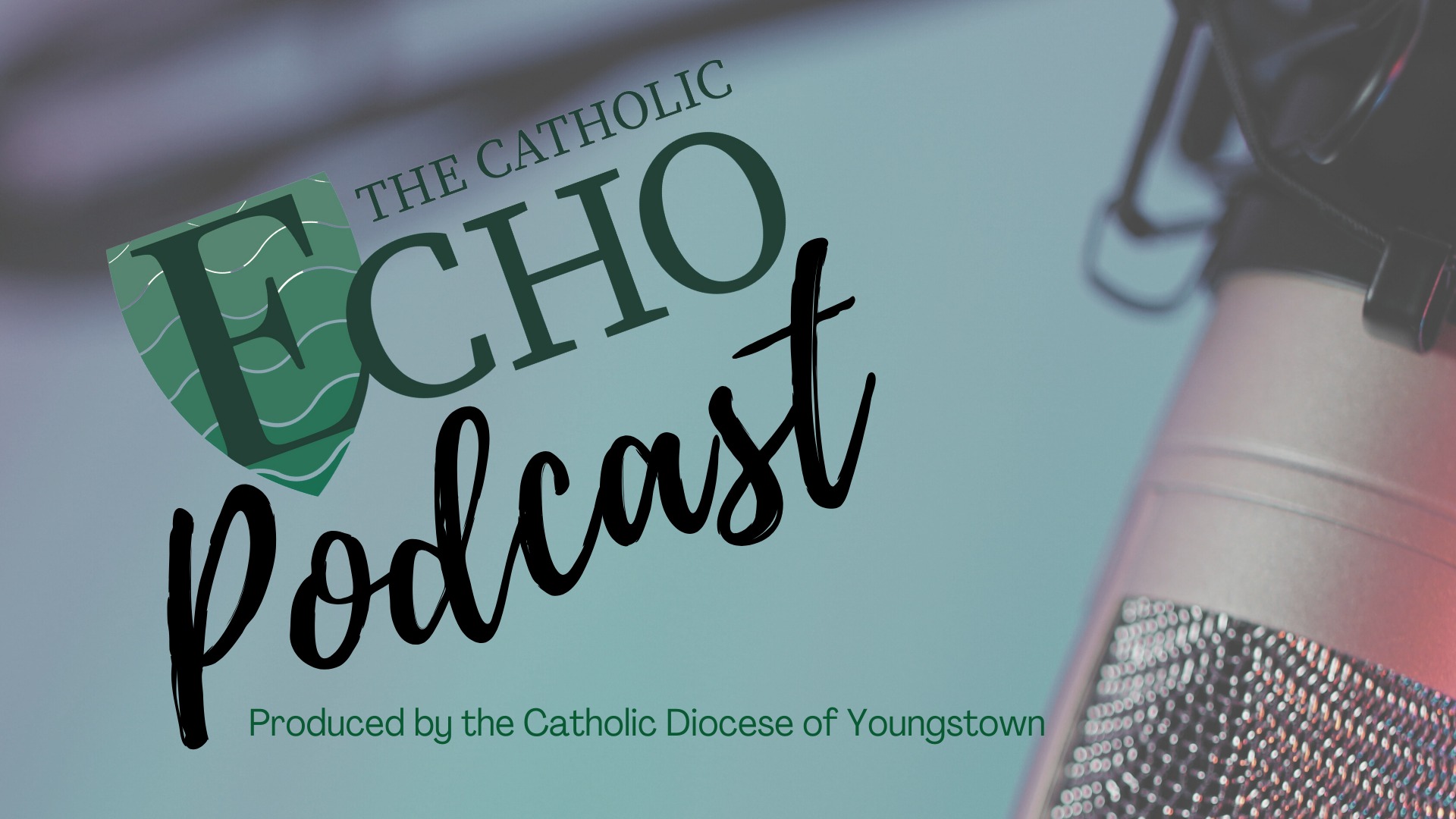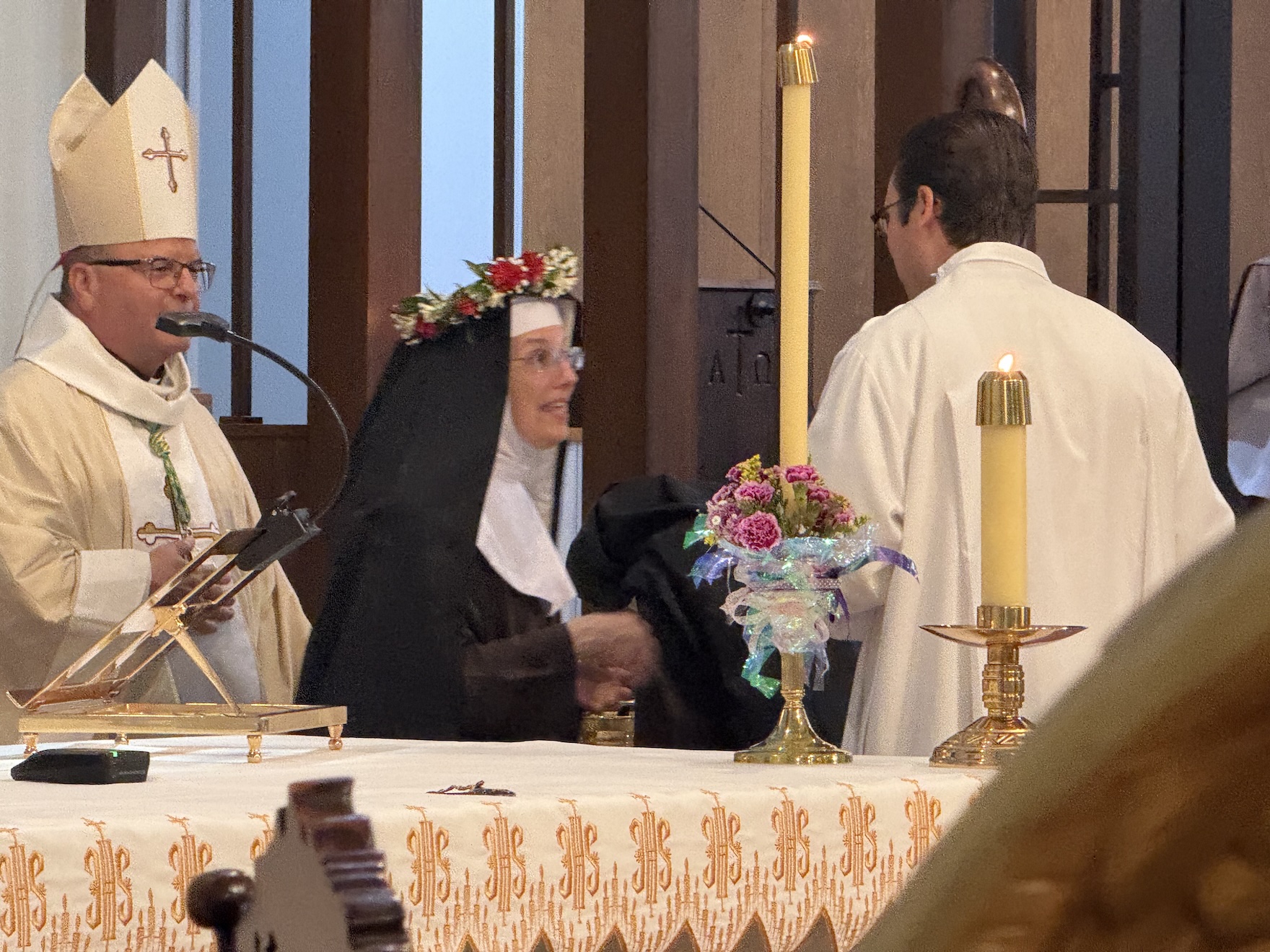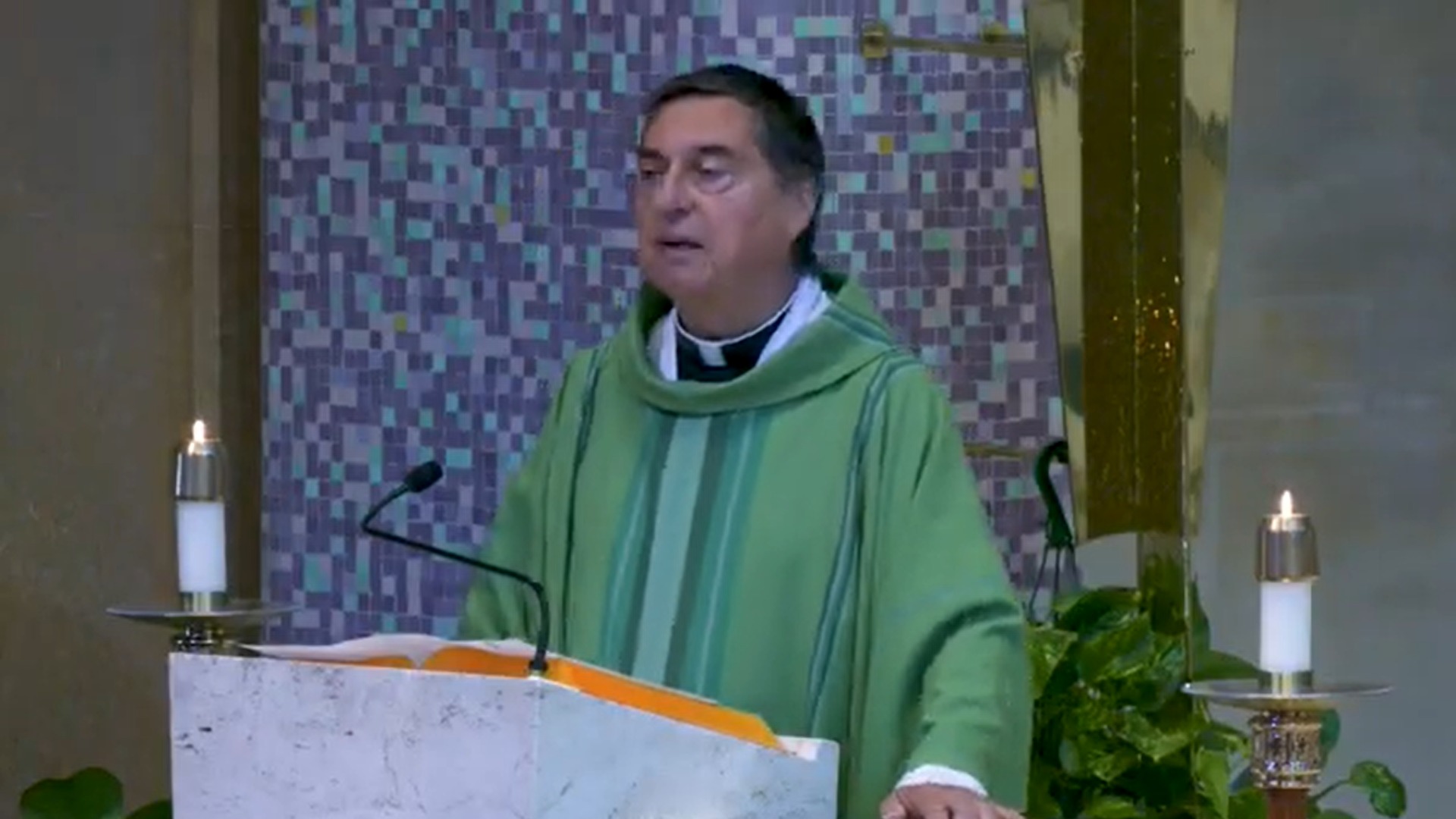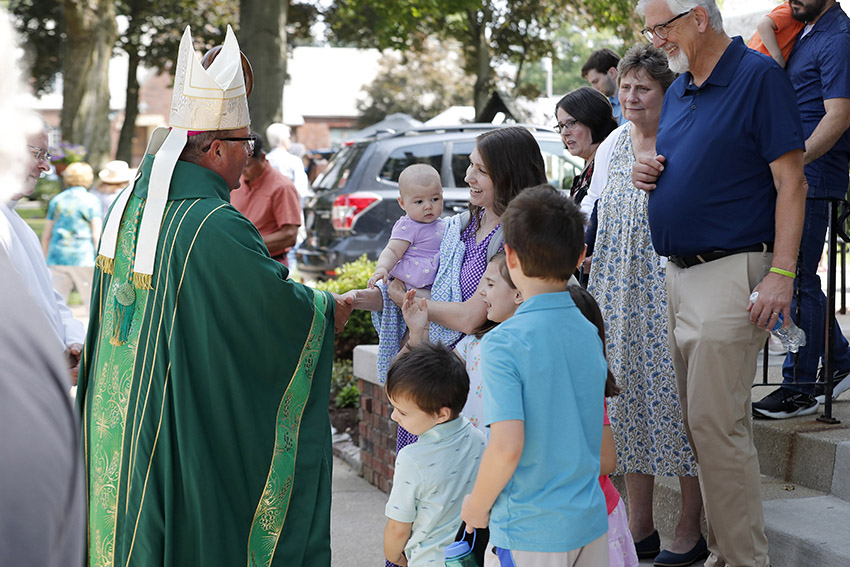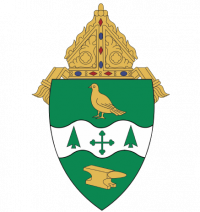
This year, the Diocese of Youngstown celebrates its 80th anniversary with a sense of pride in what has been, and a hopeful anticipation of what is to come.
From rural roots through extensive urban development, the region that the diocese serves has witnessed major changes throughout the decades. The diocese has seen hard times and happy days. According to Bishop David Bonnar, the sixth Bishop of Youngstown, the diocese’s rich history has been a real inspiration to him as he plans for its future.
“It’s always humbling entering a new assignment and community because there’s always a history that precedes me,” Bishop Bonnar said. “One of the neat things about diving in is getting to know that history and appreciating that history.”
The first Masses in what is now the Diocese of Youngstown were celebrated in 1817. In Columbiana County, Catholics assembled in the log cabin home of Daniel McAllister at St. Paul Settlement, near Dungannon, where St. Philip Neri Parish would soon be established. The cabin was moved several years ago and now sits on parish property, where visitors can tour it during special events. The diocese’s second-oldest parish, St. John the Baptist Parish, Canton, Stark County, was officially established six years later. However, Catholics first started assembling in 1817 under an oak tree on the property of John Shorb in Canton.
The churches that these early Catholics built—in fact, all Ohio churches at this time—were a part of the Diocese of Bardstown, Kentucky, formed in 1808. From Bardstown, the Diocese of Cincinnati was formed in 1821.
The Diocese of Cleveland was established in 1847 and served all of northern Ohio for many decades, including Ashtabula, Columbiana, Mahoning, Portage, Stark and Trumbull—the six counties of the Diocese of Youngstown today.
The Catholic Church of Cleveland grew to such an extent that on May 15, 1943, Pope Pius XII announced the establishment of the Diocese of Youngstown, with a Catholic population of 156,230.

The Diocese of Youngstown was born while the world was at war. During World War II, Youngstown became a center for producing military materials in its steel mills.
“We were founded in a time of hardship,” said diocesan archivist and chancellor Joan Lawson. “When you look at what happened in this nation in terms of production during the war, it is astonishing how this nation went from not having very much armament to just producing and re-engineering unfathomable amounts of war material. And I think that mindset of ‘we can do this, we must do this.’ It had to have pervaded.”
The first Bishop of Youngstown was James A. McFadden, a former auxiliary bishop in the Diocese of Cleveland. In 1951, Bishop McFadden published the book The March of the Eucharist, detailing each church in the diocese, as well as the histories of the early Church throughout Ohio and the United States.
“The establishment of a new diocese under the exigencies of a great global war that caused priorities on building materials and restrictions of available labor; and, in addition, a shortage of priests and sisters, many of whom went to the front and offered services to God and Country, might have been an extremely difficult task, but in reality, it was an undertaking of love. Love begets love and the arduous burdens that had to be confronted were greatly lightened through the generosity, loyal and sincere cooperation of the members of the new diocese. No task seemed too large; no problem too difficult. Ceaseless toiling in the vineyard of the Lord is a source of deep spiritual satisfaction,” McFadden wrote in The March of the Eucharist.
When Bishop Bonnar first arrived in Youngstown, he found a copy of the book and dove into the rich history throughout the diocese.
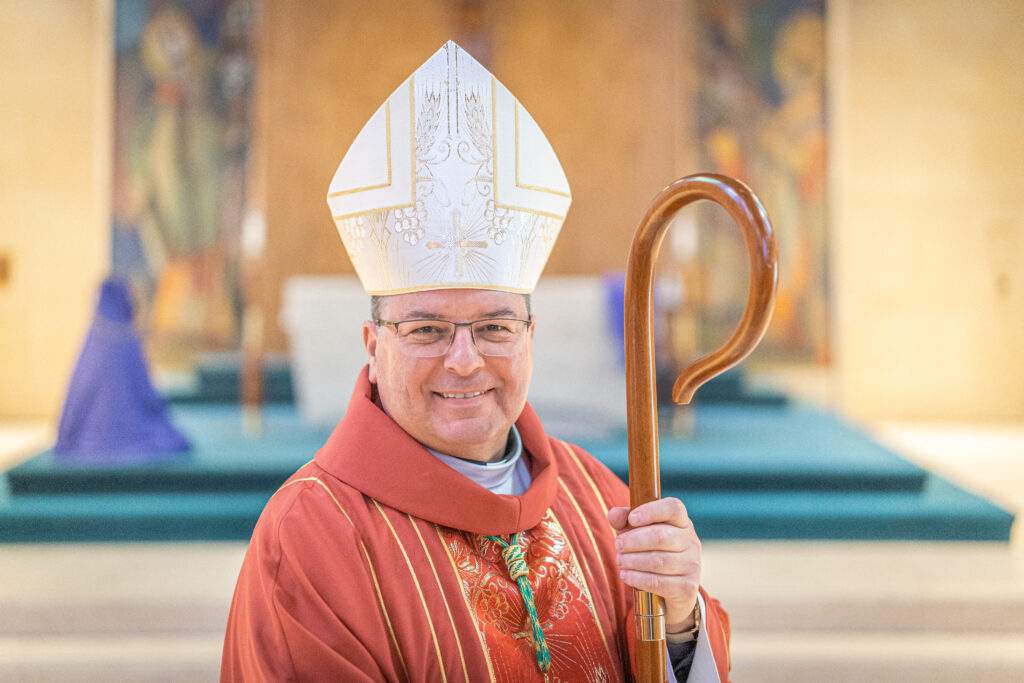
“I’m humbled by the footprints and fingerprints that are there before me. The Church is more than bricks and mortar, it’s ‘living stones’ as it says in the Scriptures,” Bishop Bonnar said. “I’m inspired by the lives of so many who have gone before me. I’m not just speaking in terms of clergy, but also religious and lay people.
“I have spent my entire time here in Youngstown utilizing Pope Francis’ The Joy of the Gospel as a resource. It speaks about how he invites everyone to renew their personal encounter with Jesus Christ. He invites us to be open to change in looking at our schedules and our lives, just being open to the spirit and embracing that missionary impulse.”
Bishop Bonnar—and Catholic leaders in other northeastern, midwestern and Rust Belt cities—are facing difficult realities in their leadership. The Church of today looks different than the Church of decades ago, even several years ago. Demographics are shifting and population centers are changing. Leaders must pave the path forward in order to meet the needs of their people, while doing what is reasonable—and feasible.
In his short time in Youngstown, Bishop Bonnar has had to close nine church buildings and create four new parishes through mergers. Some of these decisions formalized previous pastoral planning, and more changes are likely on the way, as it’s necessary to have a mindset of mission over maintenance
“As I travel throughout the six counties, it’s quite evident to me that people are proud of their parishes,” Bishop Bonnar said. “They enjoy a great sense of belonging from that experience. What’s happening, though, is that the whole concept and face of parish life are changing on many levels.”
For example, Bishop Bonnar mentioned how the diocese has had to adapt to having fewer priests. Nowadays, priests often serve multiple parishes. “This is different, but it’s also an opportunity to consolidate resources and to work together and collaborate. It is a challenge which I certainly don’t delight in … parish families have had to make some hard decisions. The Church is changing and we’re all changing but the one constant is God—Father, Son and Holy Spirit. That’s something we can’t lose sight of.”
Just as the diocese was founded during a period of hardship, Bishop Bonnar assumed his new role in the midst of a global pandemic and a time of highly contested political strife. He also came to the diocese following the death of a beloved bishop, George V. Murry, S.J. It was certainly a dark time for many people.
Which is why he found it necessary in his first pastoral letter, Testify to the Light, to acknowledge the darkness but also prepare for brighter days through sacramental life together. In his letter, he listed five priorities to help guide the diocese and its parishioners through troubling times: prayer, healing, communication, service and becoming joyful witnesses.
“It gave us a GPS to move forward as we face the challenges of this time and the challenges of our lives,” Bishop Bonnar said.
Monsignor John Zuraw, diocesan vicar general, echoes the bishop’s priorities, adding, “We need to be models for what it means to be Catholic and part of a Catholic community in 2023 and beyond. The question needs to be:
‘How can we have an impact upon our culture, using our Gospel values in ways that liberate and transform? How can we best use our ministerial and lay resources in parish leadership, in a society that is becoming increasingly fragmented and polarized?’ And, ‘How can we, as the Church of Youngstown, be a loving, unified sign of what it means to be a people of God?’”
“It’s always been a function here lately of demographics,” said Patrick Kelly, diocesan chief financial officer. “Based on our geographic location, there are things we have to deal with that aren’t necessarily a factor in other parts of the country. There’s been a population decline in most, if not all, of the six counties of the diocese. What we’re doing is managing a smaller subset of people. With that, you have to be able to do more with less. We continue to adjust to changes.”
At the diocese’s peak population in 1968, following the post-war baby boom and in an era of economic strength throughout the region, the Diocese of Youngstown had 112 parishes serving 287,000 Catholics.
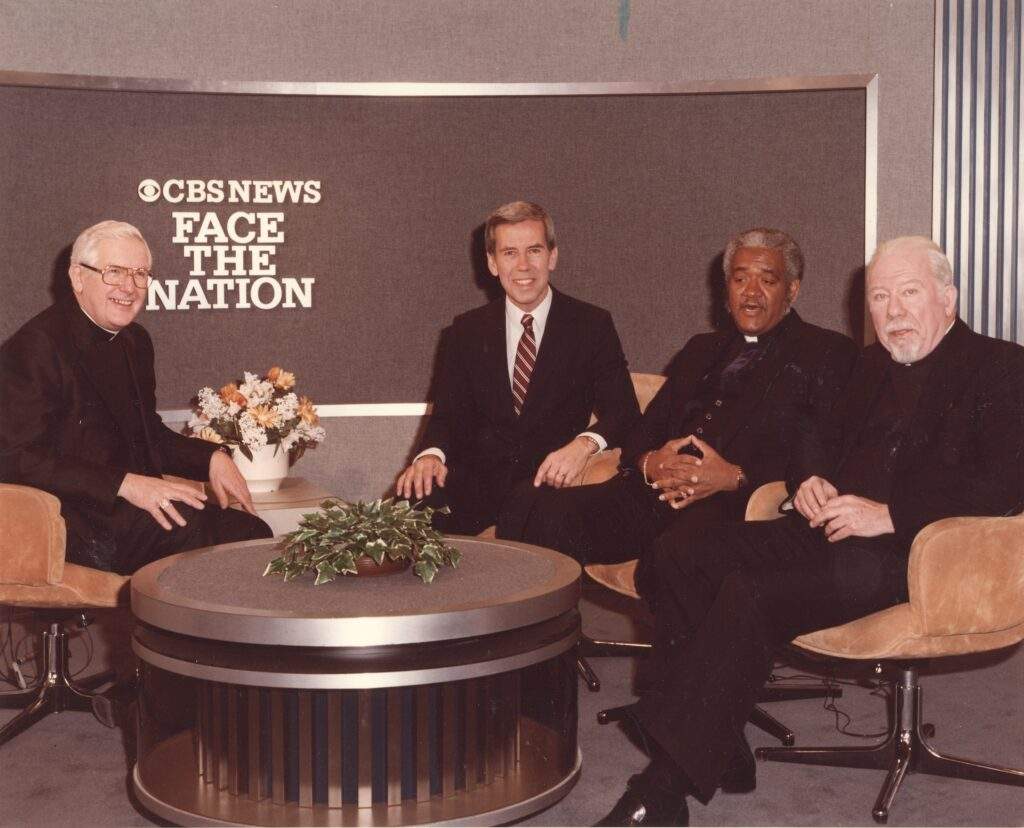
Youngstown native Bishop James W. Malone led the diocese during that period of growth. He was just 40 years old when he was consecrated as an auxiliary bishop in 1960, and he attended all four sessions of the Second Vatican Council from 1962-65, before being named the third Bishop of Youngstown in 1968.
“What is significant about his being bishop was he kind of brought in and ushered in Vatican II,” said Father James Korda, former CTNY producer and host of the Wineskins radio program. “He was the youngest bishop at the time in Vatican II and that was significant for us. When he came back from the Vatican, it was his responsibility to usher in these changes that were significant for us. And I think that is really a driving force for us. That we have seen ourselves as a Vatican II diocese.”
Bishop Malone was also an ecumenical leader in Youngstown. In September 1977, in response to “Black Monday” in Youngstown, when more than 5,000 people lost their steel mill jobs and 40,000 others were affected by job loss in the area, Bishop Malone stood up for his people by forming an ecumenical coalition to “serve the common good and the needs of the people.” The coalition lobbied the federal government and engaged the community with the hope of securing federal loan guarantees for a plan to reopen the mills under employee/community ownership. Though the effort was ultimately not successful, it offered hope and example of how different faith communities could work together toward social justice.
The Diocese of Youngstown today looks more like the Diocese of Youngstown at its inception, as there were 98 parishes and over 150,000 Catholics in 1943. It was necessary to form the diocese 80 years ago and the diocese still serves its intended purpose in today’s generation.
“I just think … we’re growing,” Father Korda said. “Maybe not in participation at Sunday Mass, but I think we’re growing in another way. I think we’re moving with the times.”
In 2022, Bishop Bonnar formed a communications department to spread the good news and advance the mission of the Church. This new department integrates all public relations, social media, multimedia and publishing operations for the diocese, including the new Catholic Echo magazine.
“Things change and social media is really the new front door of the Church,” Bishop Bonnar said. “We’re really trying to engage the people where they are. We certainly want to use every single resource to proclaim the joy of the Gospel so that people know that the Church is relevant and the Church can make a difference in their lives.”
While looking forward, it’s also imperative to look back at where we came from, Bishop Bonnar said. That’s why he established the archives department for the diocese in 2022 as well.
Lawson was named archivist on March 1, 2022, and has the honor of preserving the story of the past 80 years of the Diocese of Youngstown.“ Learning about and appreciating the past has so many benefits,” Lawson said. “ … Studying the past lets us see the flow of change in our diocese, and gives us a larger perspective that can help us make wiser decisions … Our present experiences may in some ways be different from our ancestors’ experiences, but we recognize the shared hopes that connect our lives to theirs.”
Along with the efforts at the diocesan level, parishes are encouraged to maintain their own archives and preserve the history they are making in the present.
It’s a small part of Pope Francis’ call to be a Church of going forth—a call of missionary discipleship. It’s something Bishop Bonnar has emphasized many times in his relatively short time in Youngstown. It’s a call to all parishioners in all six counties to continue living their faith to the fullest.
“We cannot forget our story,” Bishop Bonnar said. “And we are still a growing entity. We need to keep telling the story of the faith in Youngstown, which now is 80 years old.”
Catholic History in Northeastern Ohio
1812- 2023
Though the Diocese of Youngstown is just 80 years old,
Catholics started settling in the region more than 200 years ago.
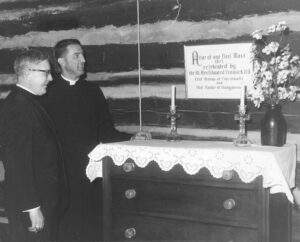

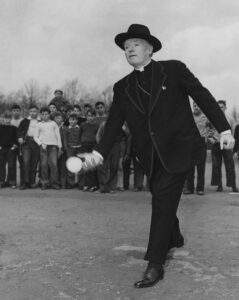
The Diocese of Cleveland is established, including the six counties which now compose the Diocese of Youngstown.

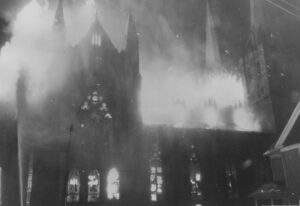
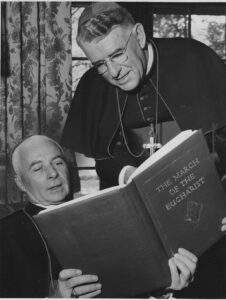
The Most Rev. James A. McFadden is appointed the first Bishop of Youngstown.
Bishop McFadden establishes Catholic Charities to coordinate the social service efforts already present for the past 25 years in five of the six counties of the Diocese of Youngstown—The Catholic Service League of Ashtabula County is soon added to complete the diocesan presence in each of the counties.
Bishop McFadden dies and the Most Rev. Emmet M. Walsh becomes the second Bishop of Youngstown.
Walsh College in North Canton officially opens to a freshman class of 65 men.
The Second Ecumenical Council of the Vatican, commonly known as the Second Vatican Council, or Vatican II, is held, with Bishop Malone in attendance at all four sessions.
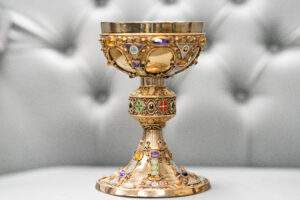
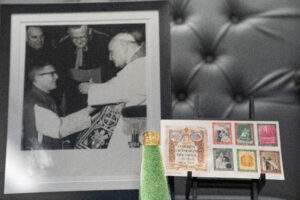
John J. Augenstein is named first lay superintendent of diocesan schools.
Bishop Malone is elected president of the United States Conference of Catholic Bishops and serves for
three years.
The first White Mass, a liturgy for health care workers, is celebrated by Bishop Tobin in St. Columba Cathedral. Later that year, the first Red Mass, a liturgy for judges and lawyers, is also held at the cathedral.
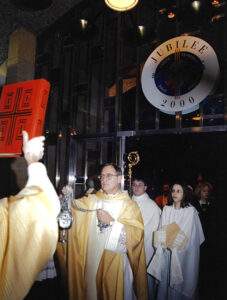
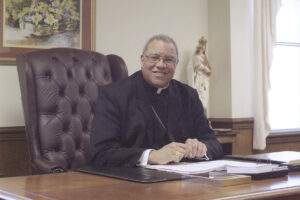

The Great Jubilee Year 2000 is ushered in with Bishop Tobin blessing the front door of St. Columba Cathedral, as St. Pope John Paul II blessed and entered the Holy Door in St. Peter’s Basilica.
The local phase of the Synod on Synodality begins a two-year process of listening and dialogue with a focus on communion, participation and mission.
Bishop Bonnar publishes his first pastoral letter, Testify to the Light, where he names priorities to help guide the diocese through the “dark time” of political strife and social injustice that permeated our post-COVID world.
Bishop Bonnar establishes a new Department of Communications to integrate all communications and publishing operations for the Diocese of Youngstown.
